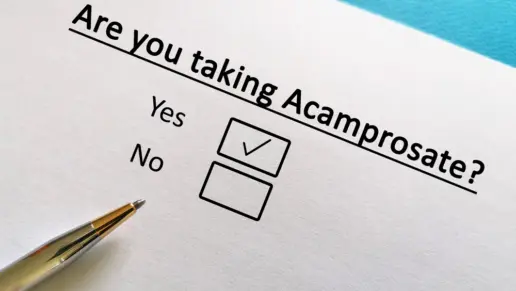Methadone Medication-Assisted Treatment Explained
Today, opioid addiction treatment is commonly delivered using medication-assisted treatment (MAT) because it provides a “whole-patient” approach. MAT involves the use of FDA-approved medications, clinically tailored to meet each patient’s needs, used in combination with counseling and behavioral therapies.1.5
What is MAT?
One typical counseling therapy used during MAT treatment is cognitive behavioral therapy (CBT). It helps clients deal with psychological symptoms of anxiety and depression, which are common in people with opioid use disorder. CBT is also useful for helping people manage chronic pain, which is often experienced by people who have been opioid abusers.5
Research shows that MAT can successfully treat opioid use disorder, help sustain recovery, and certain MAT medications reduce the chances of opioid overdose. The combination of medications and therapies also helps to lower a person’s risk of contracting HIV or hepatitis C by reducing the potential for relapse and, therefore, reducing incidence of IV drug use.3,5
Methadone medication-assisted treatment also:5
- Improves patient survival.
- Increases retention in treatment.
- Decreases illicit opiate use and other criminal activity among people with substance use disorders.
- Increases patients’ ability to gain and maintain employment.
- Improves birth outcomes among women who have substance use disorders and are pregnant.
The Use of Methadone in MAT
Methadone is a medication approved by the Food and Drug Administration (FDA) to treat opioid addiction.2 It reduces opioid cravings and withdrawal symptoms, and it also blunts or blocks the effects of other opioids.
When taken as prescribed, methadone medication-assisted treatment is safe and helps individuals to achieve and sustain abstinence and recovery. When combined with counseling and behavioral therapies, methadone provides clients with comprehensive addiction treatment.
For individuals involved in the criminal justice system, methadone medication-assisted treatment has been found to reduce criminal activity, reduce probation revocations, and reduce re-incarcerations. However, the perception that MAT is simply “substituting one drug for another” can persist in the field of criminal justice and across communities, leading to an underutilization of this evidence-based treatment.1,2
Methadone Fast Facts
Here are some essential facts and information about methadone medication-assisted treatment: 1,2,4,5,6
- Methadone is usually taken every day.
- It is available in liquid, powder, and wafer forms.
- When used to treat opioid addiction, methadone can only be dispensed through a SAMHSA certified opioid treatment program.
- Methadone is a Schedule II drug, legalized under the Controlled Substances Act.
- Schedule II drugs are defined as drugs with a high potential for abuse, with use potentially leading to severe psychological or physical dependence.
- Methadone is a generic name, not a brand name.
- Generic methadone is offered by several drug manufacturers.
- The brand names of methadone in the U.S. are Methadose and Dolophine.
How Does Methadone Medication-Assisted Treatment Work?
Methadone activates opioid receptors in the brain very slowly over very long periods of time, and it does not produce the same highly euphoric sensation that other opioids do. Methadone reduces or eliminates withdrawal symptoms and decreases the intensity of opioid cravings.
When used as one part of a whole MAT program, methadone is known for:
- Reducing the euphoric (“high”) caused by opioid abuse
- Reducing opioid withdrawal symptoms
- Controlling or eliminating cravings for the opioid the person was dependent on
With those issues under control, people can focus on things like:
- Improving physical and mental health that has been damaged by addiction
- Strengthening relationships with friends and family
- Finding and/or maintaining a job
How Do Methadone Clinics Work?
Methadone treatment provided in an outpatient setting starts with daily visits to a federally certified opioid treatment program (OTP) – commonly referred to as a methadone clinic. Upon entry to the program, counselors discuss intake procedures, informed consent, and discuss treatment planning. 3,7,8
Informed consent covers the rules that must be followed in order to receive methadone medication-assisted treatment:
- Patients must consume their complete dose in front of dosing staff and are not to give or sell any part of their dose to others.
- No violence or threats of violence against staff or other patients.
- The patient is to attend consultations with their doctor as required.
- Specifications of consequences for breaching the rules.
The methadone medication-assisted treatment intake process covers:
- The rationale for methadone maintenance treatment.
- Side effects and risks of treatment.
- Expected length of treatment.
- Starting dose and the schedule by which doses will be increased.
Usually, a staff physician at the clinic writes the methadone prescription and nurses dispense it in-house. Methadone clinics require their clients to attend peer group counseling meetings and individual counseling meetings. Clinic staff also conduct random drug tests to check for the presence of methadone metabolites and screen for any ongoing illicit drug abuse.3,8
The length of time a person receives methadone medication-assisted treatment varies but can last 1-2 years or more for those who require long-term maintenance. To end treatment, clients must work with clinical staff as they gradually reduce the methadone dosage to prevent withdrawal symptoms.
For the first seven to 10 days of methadone medication-assisted treatment, clients take daily doses of medication while being closely monitored. After this initial period, most will visit the methadone clinic daily in order to dose and attend counseling. After the first six months, if a person is following the rules of the clinic and their individual treatment plan, they may earn take home doses of methadone to last anywhere between a few days to four weeks.
Common and Serious Side Effects of Methadone
Side effects of methadone treatment should be taken seriously, as some of them may indicate an emergency. Patients should stop taking methadone and contact a doctor or emergency services right away if any serious side effects occur.
Common side effects of methadone include:
- Restlessness
- Feeling faint
- Nausea or vomiting
- Slow breathing
- Itchy skin
- Heavy sweating
- Constipation
- Sexual problems
Serious side effects of methadone include:
- Difficulty breathing or shallow breathing
- Hives or a rash
- Swelling of the face, lips, tongue, or throat
- Chest pain
- Fast or pounding heartbeat
- Hallucinations or confusion
- Possible nerve damage
- Possible liver issues
- Overdose
Risks Associated With Methadone Medication-Assisted Treatment
One of the most common risks of methadone is the use of the drug during pregnancy. Studies note that women should not consider coming off methadone during pregnancy. The risks can cause severe harm to the unborn baby. An unborn baby that is dependent on methadone has a higher chance of premature delivery.
Other risks of methadone include:
- Possible overdose if you take methadone more often than prescribed or take more than the recommended dosage. Other unintentional overdoses can also occur.
- Even after the effects of methadone wear off, its ingredients remain active in the body for much longer. The half-life of methadone is 8-59 hours, which means that it might take between 1 and 14 days for the medication to completely leave the body. This increases the risk of overdose if a person continues to abuse opioids while taking methadone.10
- Antibiotics can lower the amount of methadone that stays in the body, while anti-fungal and SSRI medications can increase methadone levels.9,10
Benefits of Methadone Medication-Assisted Treatment
One of the biggest benefits of a methadone treatment clinic is efficiency. Rather than inpatient treatment for 30, 60, or 90 days at a residential center, you can receive MAT in an outpatient setting and continue living your life with minimal interruption.
Other benefits of methadone therapy include:
- You have less likelihood of getting an infectious disease from injection drug abuse.
- You experience improved social functioning by being abstinent and sober.
- Withdrawal symptoms are reduced, so you can be more present with family and friends and be more present and engaged in therapy.1,3
Improving Your Chances of Recovery Success
To achieve the best results from your methadone medication-assisted treatment program:1,3
- Attend the methadone clinic to dose as scheduled; do not miss doses or counseling sessions.
- Work with the in-house doctor to find a dosage level that relieves your symptoms.
- Participate in therapy and other psychosocial services.
- Never take more than the amount prescribed or take medication more often than ordered.
- If a dose is missed or feels like “it’s not working,” do not take an extra dose of methadone.
- Do not consume alcohol while taking methadone.
- Be careful driving or operating machinery while on methadone medication.
- Call 911 if too much methadone is taken or if an overdose is suspected.
- Do not shared your methadone with anyone even if they have similar symptoms or have the same condition.
- Prevent accidental ingestion by others by storing methadone in a lockbox out of reach.
Resources
- SAMHSA Medication Assisted Treatment Brief. https://store.samhsa.gov>pep19-matbriefcjs_0
- Substance Abuse and Mental Health Services Administration (.gov) (SAMHSA). Information about medication-assisted treatment. https://www.fda.gov/drugs/information-drug-class/information-about-medication-assisted-treatment-mat
- Substance use disorders: Medications and counseling related conditions: Methadone https://www.samhsa.gov/medications-substance-use-disorders/medications-counseling-related-conditions/methadone
- Food and Drug Administration, May,20023 Information about medication-assisted treatment (MAT). https://www.fda.gov/drugs/information-drug-class/information-about-medication-assisted-treatment-mat
- SAMHSA. Medications for Substance Use Disorders. Principles of Drug Addiction Treatment: A Research-Based Guide (Third Edition)
- Rosland Franklin University of Medicine, Controlled Substances, Schedule II Drugs https://www.rosalindfranklin.edu/research/centers/research-support-offices/environmental-health-and-safety/controlled-substances/
- Methadone Take-Home Flexibilities Extension Guidance https://www.samhsa.gov/medications-substance-use-disorders/statutes-regulations-guidelines/methadone-guidance
- National Academies of Science, Engineering, Medicine
- Medline Plus, National Library of Medicine. Methadone Overdose.
- Medsafe Publications. Medications Interacting with Methadone.




